

Are you curious about the state of startup failure rates statistics in 2020? Then look no further.
We’ve curated, vetted, and categorized a list of up-to-date stats including the effects of the coronavirus on small businesses.
With so much going on in the world, we wanted to put together a guide with the most up to date stats all in one place.
Here are the most interesting startup failure rate statistics we think you should know:

The effects of Coronavirus have been devastating to many people and businesses around the world. Normal small businesses, as well as tech startups, face many challenges going forward as a result of the pandemic.
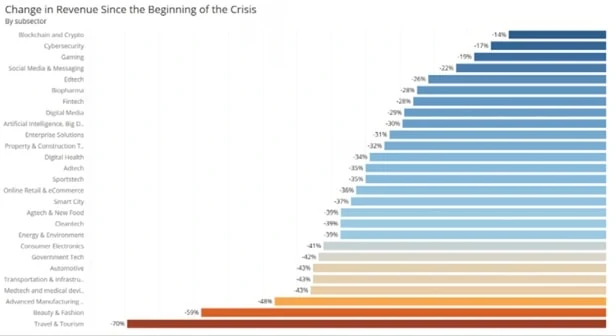
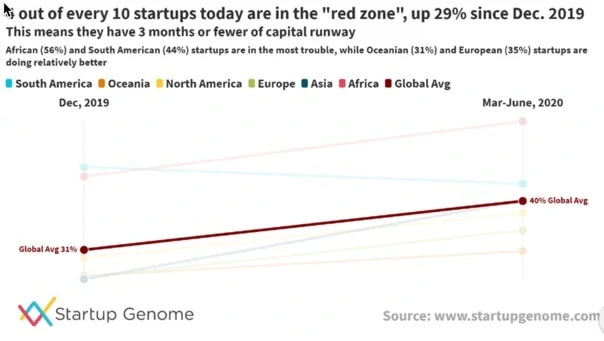

In this article we differential between a regular small business startup vs a real startup, which we call a “tech startup”.
Not all new businesses can be classified as a startup because they are not innovative or scalable. For example, a new pet grooming business would be classified as a small business because there are many other pet grooming stores.
A tech startup is an innovative business that doesn’t rely on employees servicing customers to scale. For example, a company like Neflix was a tech startup because they created software that could be scaled on a global level that was necessarily dependant on hiring additional employees.
Here are the statistics on how many startups fail:

If you are looking to build a startup you want to make sure it’s in an industry that gives you the best chance of success.
That is why we looked at the stats for regular small business startup failure rates across industries in the United States:
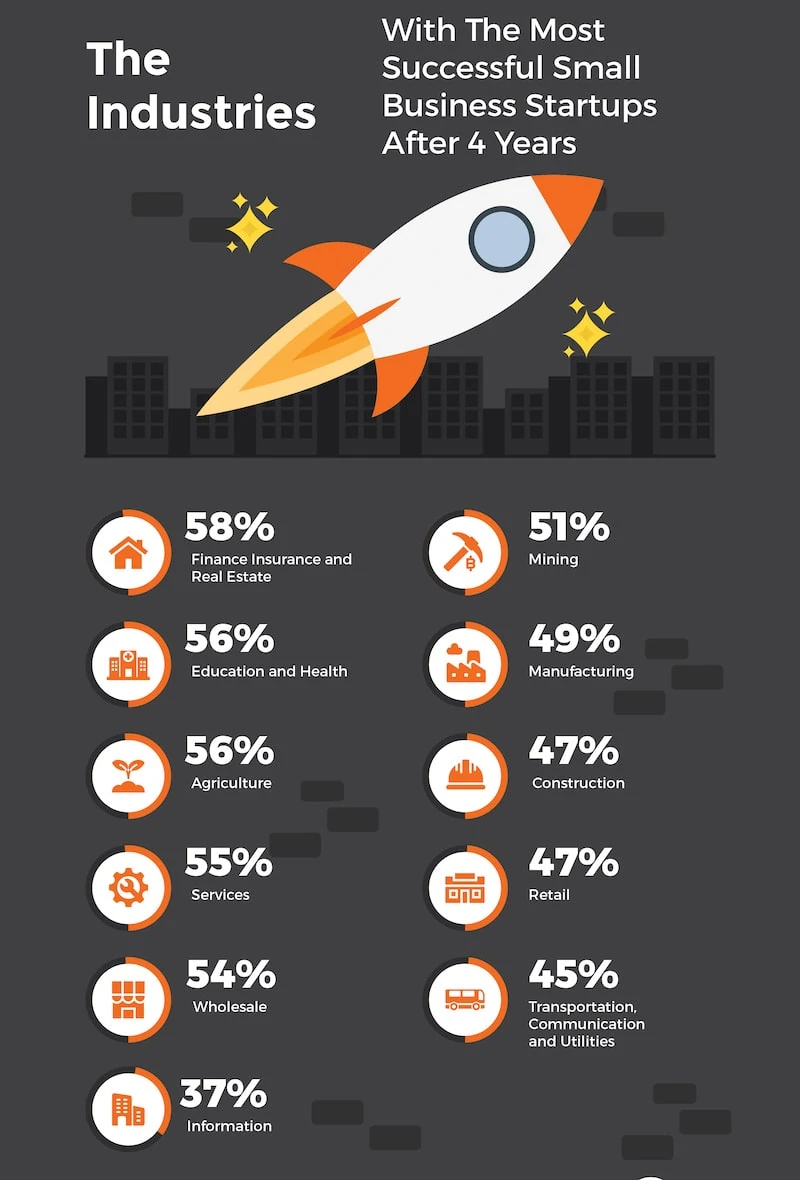
(Source: Statistic Brain)
If you are looking at starting a traditional small business than these numbers can help you make a decision about which industries have the highest failure rate.
However, for global tech startups the numbers look much different as these as growth companies in experimental, non-traditional industries. Startup Genome provides us insight on which startup sub-sectors are growing, mature, or declining based on early funding deals and exit deals over 5 years from 2019:

As you can see, startups that involve Robotics or Blockchain tend to get a lot more funding much higher payouts (exit growth) than startups in Edtech and Digital Media.
This doesn’t mean that your startup is doomed to fail if you are in one of these categories, it just means that it will be more of an uphill battle.
Looking at the failure rate of a regular startup can make you wonder “how the heck can I avoid making the same mistake?”
Here is the top 10 reasons why a startup can fail:

Money and financing is a key ingredient to the success of a traditional small business or startup. With the coronavirus pandemic it has made financing even harder than before.
Here are the most interesting startup financial stats we found:
So who are starting small businesses? The latest statistics in 2020 provided by Guidant Financial have a few surprises. Let’s take a look at the most interesting stats for small business owners in the US:
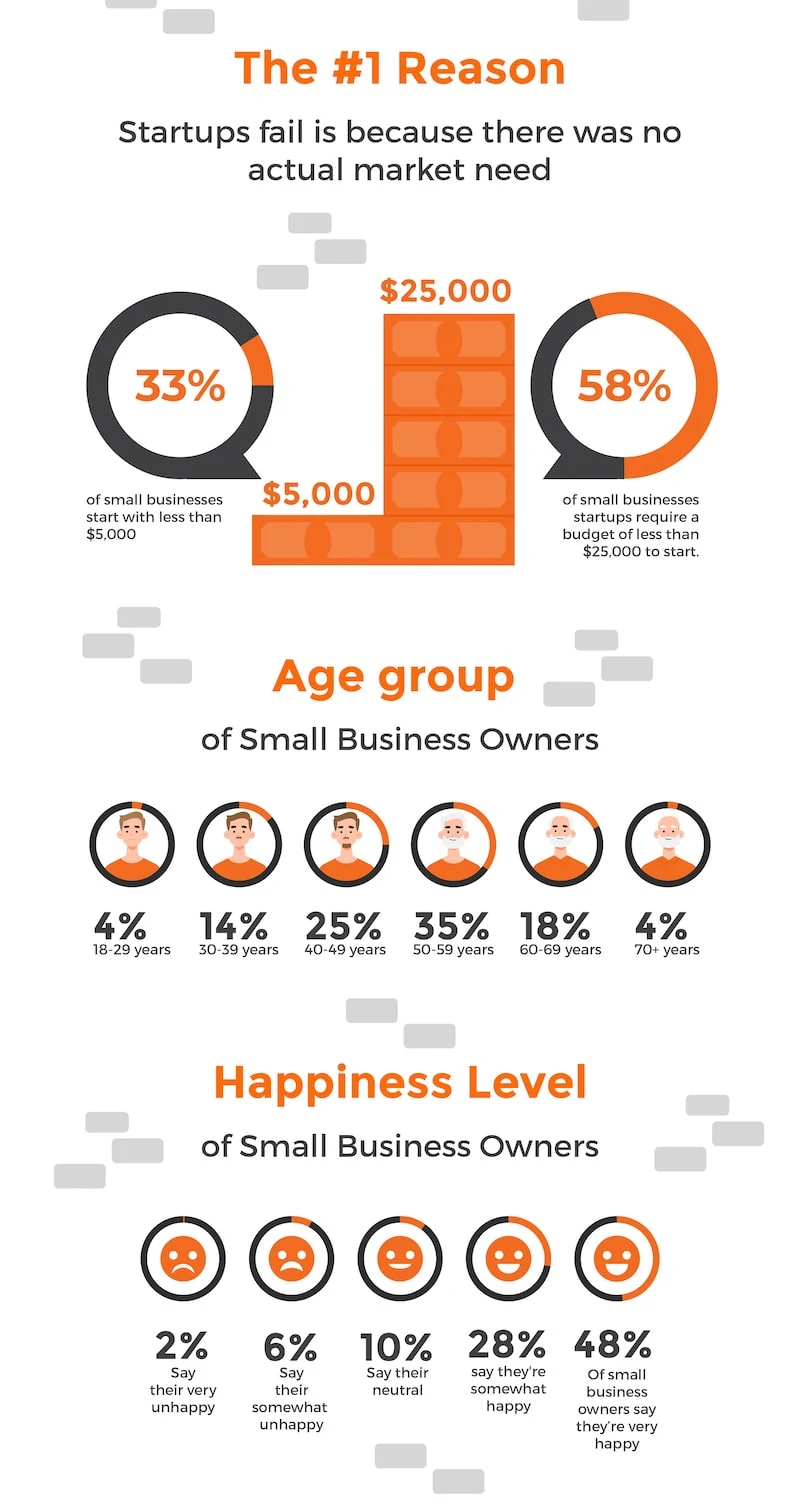
Although being in the right city doesn’t guarantee your startup will not fail, it can definitely help you connect to the resources you need.
Here is the latest list from Startup Genome of the top cities to launch a tech startup:
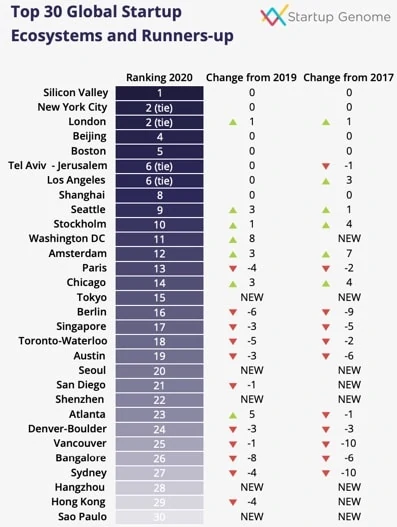
I know what you’re thinking, reading all the startup failure rate statistics can be pretty discouraging. But in between all the depressing stats are some really encouraging tidbits. Like 48% of small business owners reporting themselves as being very happy.
Also, after the first two years, the chances of your startup failing drops dramatically. So if you manage to stay in business long enough, the less like you will fail.
If you think I missed any important stats, make sure to connect with me and let me know!

We're An Affiliate - We are reluctant to allow advertising on this blog, which we believe will spoil the user experience. Instead (so that we can continue sharing our knowledge and expanding our content), we have decided to include affiliate links for the products that we use and/or rate highly.